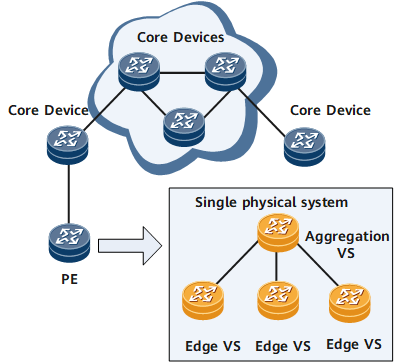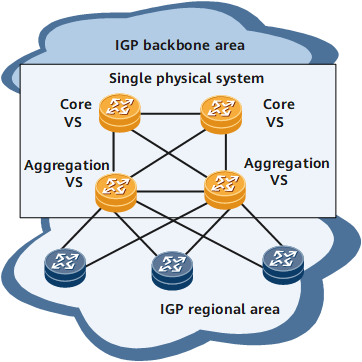Simplification of Network Deployment
On a live network, users access the core layer through the access and aggregation layers. On a large network, a substantial number of access and aggregation devices are used to meet surging access needs. This type of deployment makes network management difficult.
The virtual system (VS) technique effectively addresses this problem. As illustrated in Figure 1, one physical device can serve as both edge and aggregation nodes. This application simplifies the network topology and makes the network easier to manage and maintain. In this scenario, a VS can be configured as an aggregation node, whereas the other VSs are configured as edge nodes.
In Figure 2, a physical device can serve as both aggregation and core nodes (such as the BRAS, PE, and P), which simplifies network topology and network management and maintenance.

